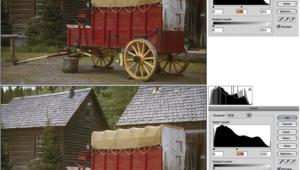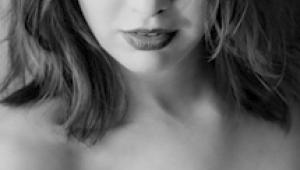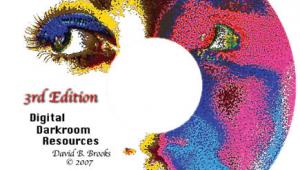Digital Photo Retouching
The New Wacom Intuos 9x12 Graphics Tablet System
For photographers one of the greatest advantages of digital photo processing is the ability to do all of your retouching, repair, and spotting just once and store it permanently in a computer file. Then, every print or other reproduction of the image is perfectly clean. You never have to spot or retouch that image again no matter how many times it is printed. Additionally, digital retouching is much easier, faster to accomplish, can be much more precise, extensive, as well as being entirely undetectable, when done with a computer. Learning how to retouch, cleanup, and repair a digital photograph on a computer is a simple process that requires learning just a few simple tools. Skill and refinement in retouching come with practice and the application of visual attention and discrimination which accumulates and refines the eye over time. |
|||
Digital photo retouching can be accomplished with any computer that's sufficient to run Photoshop and other photo image-editing applications like PhotoPaint, Photo-Impact, and Picture Publisher. All of the major image-editing applications, and some of the lesser consumer photo applications, have the tools (brushes) required to do basic retouching. The standard hardware that comes with most computers is also sufficient to do photo retouching, but the ubiquitous mouse has distinct limitations applied to this task. A more precise and efficient tool is a drawing or graphics tablet. For this introductory article on digital photo retouching I acquired the use of the latest Wacom Intuos 9x12" graphics tablet, which is supplied with a pressure sensitive pen and their new 4D Mouse. I found this new size Wacom tablet and the new 4D Mouse an ideal setup for the most precise and efficient application of digital photo retouching. |
|||
The Basics Of Digital
Photo Retouching. Essentially most digital retouching can be
done with just one primary tool for all three kinds of work you may require
doing: spotting specs of dirt and minor scratches in film scans, repairing
major damage and removing and replacing ugly distractions in an image,
as well as doing cosmetic retouching on people's images. In Photoshop
that tool is the Rubber Stamp, and in other applications it is sometimes
referred to as a Clone brush. This brush-type tool is quite unique, although
it applies image information like many other brushes, because it obtains
that information from a designated location in the image in which you
are working. |
|||
As you fill-in this little speck of black, that spot of white, in a blue sky for instance, you may find that the reference pickup point for the Stamp/Clone brush needs to be moved to another angle or distance from where the spot is to get just the right color and tone to fill-in the offending bit of dirt. To move the pickup reference point for the Stamp/Clone brush tool, locate the cursor at the new area from which you want to select information and depress the control key while you click the mouse button. As you go from one area in an image to another to cleanup dirt and scratches, you will find you may not have to relocate the Stamp/Clone brush pickup point for every spot you fill-in, just some where the spot may be next to a shadow, highlight, or other image detail. |
|||
Obviously, like working on
actual film or a print in analog mode, with a computer you'll need
to magnify the image to do the spotting and retouching. So, use the application's
zoom view control to display just a small portion of the image magnified
so it fills the entire screen. I find when retouching 20MB image files,
which I use for making 11x14 prints, that I have the best visual control
of the Stamp/Clone brush at 150-200 percent of actual image size. In addition
to this adjustment, most applications like Photoshop support specifying
the size of brush tools, as well as sometime the shape, and equally important
the edge softness of the brush, which aids in blending the information
applied into the surrounding image area. However, in some image subject
areas, like human hair, you may need to use very little edge softening
to preserve the fine image detail. This fine detail area retouching often
requires selecting a smaller brush size as well, and also working at a
higher image magnification (zoom) setting. |
|||
Also, with most applications
like Photoshop, you can define the degree of transparency of the brush's
application of information. If transparency is set at 100 percent, then
the area where the brush applies image color and tone is replaced completely
with the new information. If the transparency of the brush is adjusted
to less than 100 percent, 50 percent for instance, half of the original
information density remains after application and half is the new information.
This ability to adjust transparency makes it possible to gradually replace
the color and tone in an area with color and tone from another, making
the softening of shadows under the eyes and the hiding of blemishes in
skin tones, subtle and smooth while preserving the natural texture and
contours of complexion tones. |
|||
Sometimes when a larger area of an image has been damaged, replacing the damage with adjacent image information does not blend into the picture and provide as smooth a result as you would like. Another brush found in most applications, which usually has a water drop icon symbol and is sometimes called a Blur tool, applies local softening. This brush will soften edges and irregularities, and can be used gradually, by making multiple applications, to attain just the right amount of smoothness and blending. Also, in some instances the damaged area requiring retouching includes fine detail. Another brush that "smears" color information from one area to another, often called a Smudge brush, is also useful in blending and even reshaping color information in the area of an image which includes fine detail that has been severely damaged. All of these brushes, like the Rubber Stamp, can be size adjusted, and the degree of effect can also be lessened or intensified, as well as the edge of the brushes' application area softened to varying degrees. |
|||
The Wacom Intuos 9x12
Graphics Tablet |
|||
Evaluation And Recommendation.
As I noted, I have been a graphics tablet user for most of the time I've
been doing digital image processing, and when I obtained the loan of the
Wacom Intuos 9x12, I still had and have another tablet functioning on
another Windows workstation. Regardless, I have found the Intuos 9x12
so advantageous to my work, Wacom will not get it back--just a check. |
- Log in or register to post comments


























































